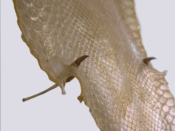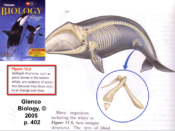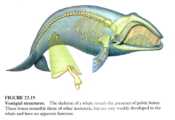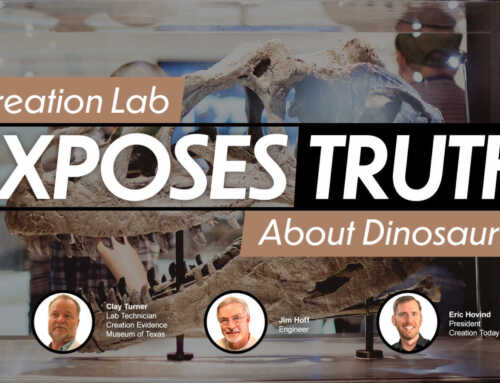Q: “Why do snakes and whales have hind limbs? Why is this not evolution?”
A: Perhaps a better way to phrase the question would be “Do snakes and whales have hind limbs? And if they do, is that proof of evolution?”
Vestigial Organs?
Snakes and whales do not have hind limbs. They do have certain bones in the hinder part of their bodies, but they do not use them for walking or locomotion. What evolutionists claim is that these bones are vestigial organs that used to be hind limbs and they lost the use of them. Now, they are said to be useless, and are pointed at as proof of evolution.
It is important to understand that loss of legs does not prove evolution, that would be the opposite of evolution. The question for evolution would be, how did they get legs in the first place? Because of the Second Law of Thermodynamics, combined with the effects of the curse of sin, genetic information can be lost in this world.
Take snakes, for example. The thing to note is that nothing about these spurs prove that snakes ever had hind legs. The spurs are not anchored to the spine as legs are, but simply float in the muscle mass. They are shaped and tipped exactly for their function and do not look particularly like legs or feet. We have handled and observed these spurs, both on live specimens, as well as just the bones themselves.
Spurs Help in Reproduction
The whole premise of the evolutionists’ assumption that snakes had hind limbs is that many textbooks claim these are “vestigial,” “rudimentary,” “useless,” or “without function.” This premise is a lie. The spurs have a very viable (and valuable) function. They are to help make baby snakes.
The reason that evolutionists want these spurs to be “former pelvic and femur bones” is because they are seeking evidence to push their religious worldview. The scenario is very much the same thing with the “vestigial femur” bones in some whales.
Get more information:
- For more information, see Lies in the Textbooks in our Creation Seminar.
- Get more information on supposed vestigial organs in the book, “‘Vestigial Organs’ are Fully Functional.”








